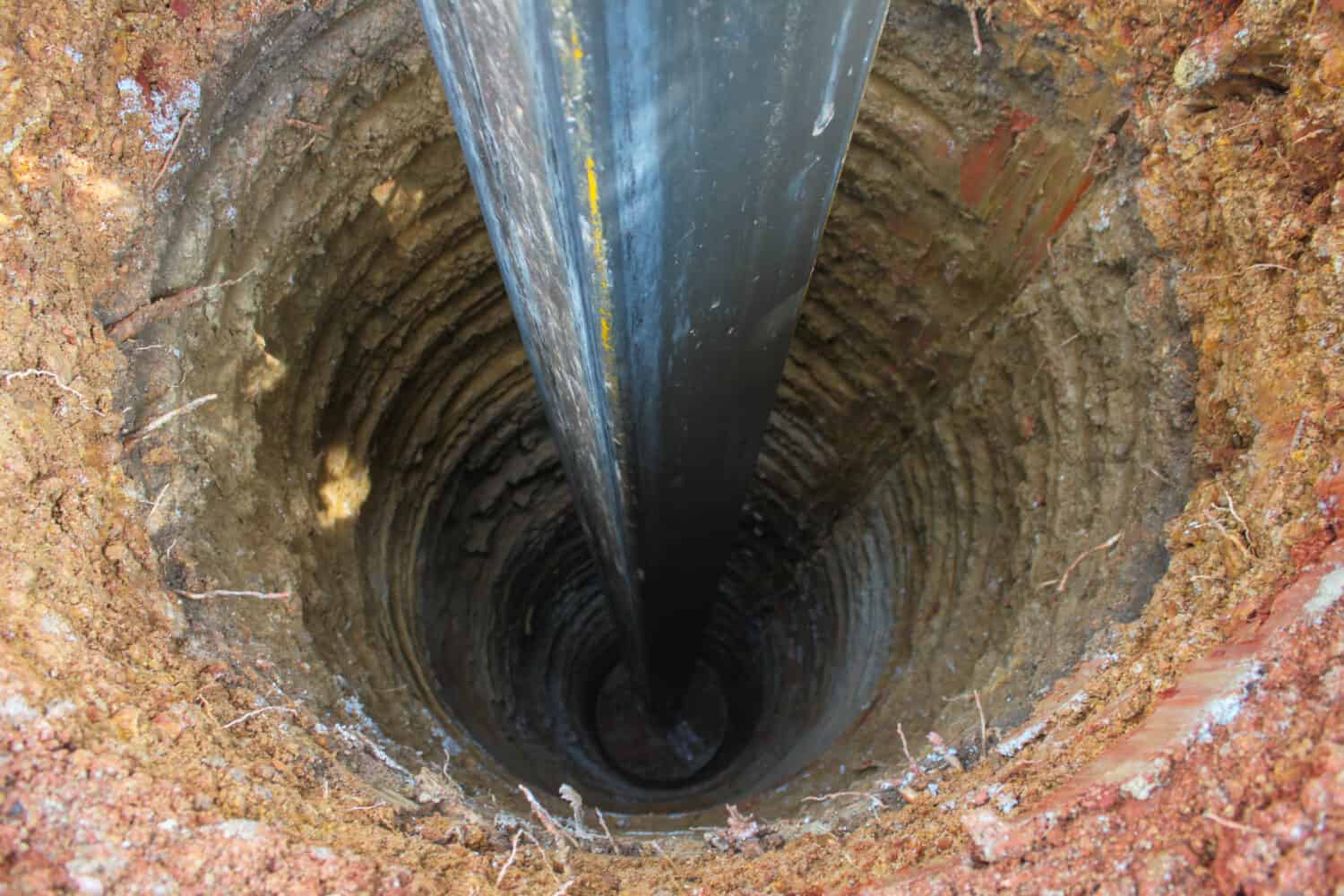When you were a child, did you ever wonder if it would be possible to dig a hole through the Earth all the way to China? Well, you might be surprised to know that the Chinese have already started that mega-deep hole on their end! In this article, we’ll learn how and why China is digging the world’s deepest hole, and what scientists have already learned from the current deepest hole, located in Russia.
The Current Deepest Hole in the World
Currently, the deepest hole in the world is the Kola Superdeep Borehole in the Kola Peninsula, near the border of Norway in the Arctic region of northern Russia. This is actually a single hole that branches into five separate holes under the surface. The project lasted from 1970 to 1994 and the deepest branch reached a depth of 7.5 miles (12 kilometers). This is about 1/3 of the distance through the Earth’s crust at that location. At the surface, the hole is about 9 inches (23 centimeters) in diameter and decreases gradually to 5 inches (13 centimeters) at its deepest point.

The deepest hole in the world is the Kola superdeep borehole in the Kola Peninsula in Russia.
©I am a Stranger/Shutterstock.com
Challenges
There are a lot of challenges to digging such a deep hole. During the collapse of the Soviet Union, cash-strapped Russian leaders cut funding for the research. In 1992 the project stopped because of temperatures that were double what geologists had expected, reaching 356°F (180°C). Although high-performance drill bits will not melt at that temperature, rock does become more plastic and difficult to deal with. Russian researchers abandoned the project in 1994 due to lack of funding. Today the desolate site is a destination only for the most adventurous tourists.

Funding for the Kola Superdeep Borehole was curtailed.
©DLeonis/ via Getty Images
Discoveries
During the drilling, researchers collected rock samples from different depths. They were surprised to discover granite rock instead of basalt at a depth of 4.3 miles (7 kilometers), which required a rethinking of geological models. The scientists also discovered water at 1.9-3.7 miles (3-6 kilometers), revealing that aquifers of water exist much deeper in the Earth’s crust than anyone had believed. They also found large quantities of hydrogen gas, and microscopic plankton fossils at 3.7 miles (6 kilometers) deep.

Microscopic plankton fossils were found in the Earth’s crust.
©Elif Bayraktar/ via Getty Images
Other Deep Drilling Projects
The United States
The United States started a project to drill through the Earth’s crust to the mantle in the 1960s. The project took place on the Pacific Ocean seabed off the coast of Baja California, Mexico. The project stopped after only 600 feet of drilling (183 meters) due to high operations costs.

The United States made an abortive attempt to drill through the Earth’s crust off the coast of Baja.
©Frederick Millett/Shutterstock.com
Germany
In 1990 Germany attempted a similar project in Bavaria called the German Continental Deep Drilling Program (KTB), but it too ended for financial reasons. It’s worth noting that although these projects generate interesting geological science, the purpose of them is usually only secondarily about increasing general scientific knowledge. The main purpose is usually commercial. If the project does not find valuable resources at a reasonable depth where extraction would be a possibility, then there is little incentive to continue drilling to greater and greater depths.

Germany’s deep drilling project took place in its mountainous and scenic Bavaria region.
©saiko3p/Shutterstock.com
China’s Superdeep Hole
China is now in the process of drilling a similar hole in the Taklamakan Desert in the northwestern Xinjiang Uighur autonomous region. The project started on May 30, 2023, spearheaded by China’s largest oil company. Current plans are for it to reach at least 6.9 miles (11.1 kilometers) within 457 days. This would actually make it shorter than the Russian borehole, but it’s probably safe to guess if they achieve their goal, they might continue on to go for a world record. Learning from the Russian experience, the Chinese plan to use equipment that can withstand temperatures up to 392°F (200 °C) and pressures 1300 times higher than the surface atmospheric pressure.

China is currently drilling a superdeep hole in the Taklamakan Desert in the Xinjiang Uighur region.
©iStock.com/Hans Harms
Purposes of China’s Experiment
Why repeat an experiment that another country has already done? Here are some possible benefits China might reap from digging its own superdeep hole:
- Discovering deeply-buried natural resources, including oil.
- Understand the Earth’s crust better to assess disaster risks from volcanic eruptions and earthquakes.
- Discover potential deep water aquifers that could irrigate the desert for agriculture.
- Increase knowledge of the Earth’s internal structure and evolution.
- Carbon sequestration: removing carbon from the atmosphere and storing it deep underground where it cannot cause atmospheric warming.
- Military applications, such as assessing the feasibility of nuclear tests deep under the surface.

Some suggest removing carbon dioxide from the atmosphere and storing it deep underground.
©Ed Connor/Shutterstock.com
Can China Succeed?
China today is technologically advanced and can study the previous examples from Russia, the United States, and Germany. The immediate goal of the project is a drilling depth that has already been achieved (by Russia), so it is known to be technologically possible. China has enormous financial resources to sustain the project to completion. Since it is planned to complete in about 15 months, it will not require long-term funding through more than one budget cycle. For all these reasons, China has every potential to complete the project successfully, and who knows, maybe even extend it to dig even deeper in the future and set a new world record.
The photo featured at the top of this post is © J.J. Gouin/Shutterstock.com
Thank you for reading! Have some feedback for us? Contact the AZ Animals editorial team.






